 March 22, 2018 John E. Ross, KD8IDJ, Editor
| ||||||
ARRL Headquarters will be closed on Good Friday, March 30. There will be no W1AW bulletin or code practice transmissions and no ARRL Audio News on that day. ARRL Headquarters will reopen on Monday, April 2, at 8 AM Eastern Daylight Time. We wish everyone a safe and enjoyable holiday! -- . . . -- LoTW may be unavailable for brief periods on Monday, March 26. Scheduled maintenance for Logbook of The World (LoTW) will take place on March 26, 1300 to 1500 UTC, to perform system upgrades. During that window, users are advised that the LoTW system may be unavailable for short periods. Radio Amateurs Pitch In to Help as "Hat Trick" of Major Coastal Storms Hit Northeast Amateur Radio volunteers with WX1BOX at the National Weather Service in Taunton, Massachusetts, and various ARES groups had their hands full during March, as Mother Nature's hat trick of nor'easters brought severe weather conditions and a lot of snow to the northeastern US. The storms caused the Cape Cod ARES team to extend activations for SKYWARN, WX1BOX, and shelter operations.
The first in the trio of nor'easters -- on March 2 and 3 -- brought mostly heavy rain and wet snow to parts of Massachusetts, Connecticut, eastern New York, and northern New England. Strong to damaging winds swept central and southern New England, with hurricane-force gusts across southeastern New England and Cape Cod and the Islands. The storm caused severe coastal flooding across multiple high-tide cycles. WX1BOX volunteers were active for 17 hours straight, and afterward, some continued to monitor high tides and strong winds, which persisted into the weekend. The volunteers handled more than 1,000 reports of wind damage, wind gusts measured 40 MPH or higher, localized road flooding from heavy rainfall, and coastal flooding. At the height of the storm, nearly a half million customers in Massachusetts alone lost electrical power. Macedo said Amateur Radio nets were active on repeaters, and on the New England reflector on EchoLink® conference node 9123/*NEW-ENG3*/IRLP 9123 system.
"Some of the highest astronomical tides of the year coupled with wind gusts of more than 70 MPH -- and as high as 93 MPH at the Barnstable County, Massachusetts, emergency operations center (EOC) -- to trigger some of the worst coastal flooding in decades," Macedo recounted. Eastern Massachusetts ARES was on standby, and Cape Cod ARES was active for several days with a regional sheltering operation, until power was largely restored to Cape Cod. "Marc Stern, WA1R, guarded the HF net on 75 meters during the nor'easter," Eastern Massachusetts Section Emergency Coordinator Marek Kozubal, KB1NCG, reported. WC1MAB at the Massachusetts Emergency Management Agency Region 2 Headquarters was also active through the efforts of Mike "Sparky" Leger, N1YLQ.
At WX1BOX, another 14 hours of SKYWARN operations ensued. Amateur Radio nets in Massachusetts, Connecticut, and Rhode Island fielded reports of heavy snowfall, including "thunder snow," wet snow damage, strong gusty winds, heavy rainfall, and minor coastal flooding. Widespread snowfall amounts totaled up to 16 inches in interior southern New England. As much as 30 inches of snow fell in western Massachusetts as well as in parts of New Hampshire, Vermont, and Maine. Cape Cod ARES was active for several days with a regional sheltering operation, until power was largely restored to Cape Cod. Macedo said it became clear from SKYWARN reports that the region would experience extended power outages. "These reports were noted by state emergency management and the media, and used to inform the public about storm risks and to prepare and act accordingly," Macedo said. SKYWARN nets were also active in the Greater New York City area, reporting damage from wet snow, strong winds, thunder snow, and snowfall totals.
The third storm turned out to be a major nor'easter and blizzard that affected the entire New England region with heavy snowfall -- 2 feet or more in more northern areas. Wind gusts greater than 70 MPH across Cape Cod and the Islands, combined with the weight of wet snow, took down trees and utility lines. "Minor coastal flooding also occurred at high tide, but lower astronomical tides again precluded a more significant coastal flood event," Macedo said. Eastern Massachusetts ARES went on standby once more after blizzard warnings were posted. SKYWARN nets were active throughout the region, gathering snowfall and wind reports from around southern New England. WX1BOX volunteers were on duty for 16 hours, bringing the monthly total to 47. Macedo said, "The [National Weather Service] Forecast Office is in the process of moving, but antennas for VHF/UHF were left in place, and volunteers provided their own gear to operate over the course of these three nor'easters."
The storm-weary northeast battened down the hatches for another coastal storm at mid-week. -- Thanks to Rob Macedo, KD1CY ARRL Seeks EC-001 Mentors Since the beginning of the Amateur Radio Emergency Communications training program, ARRL has relied on the work of mentors to help guide those interested in volunteering to serve their communities. Our mentors represent the best in Amateur Radio public service communications training, and make a substantial difference in how students approach service to their communities and Amateur Radio. The mentors bring the written text of a course to life for these amateurs, many of whom they will never meet face to face. Our current pool of mentors is low, and ARRL has an immediate need for new mentors who are willing to start as soon as they're approved. Mentors are more than teachers. They are the guides that new radio amateurs, and those new to public service communications, rely on to show them all the possibilities for Amateur Radio to benefit the public and the partners we work with.
Mentors for the EC-001 Introduction to Amateur Radio Emergency Communications course must be active radio amateurs, General class or higher, who are 18 or older and ARRL members. Applicants should have successfully completed ARRL EC-001, have experience in public service communications and ARES activities, and have the recommendation of their ARRL Section Manager. Appointment as an ARRL Field Instructor or as a Mentor for ARRL's Public Service Communications training program is for a term of 3 years. This is a renewable appointment based on satisfactory performance as an active instructor/mentor and satisfaction of all current qualifications and requirements. For more information on applying to be a mentor, contact ARRL Emergency Preparedness Assistant Ken Bailey, K1FUG, (860) 594-0227. Read more. Deadline Approaching to Submit Nominations for Five ARRL Awards The deadline to submit nominations for these five ARRL awards that recognize educational and technological pursuits in Amateur Radio is rapidly approaching. Nominations are also open for the League's premier award to honor a young licensee.
The ARRL Board of Directors selects recipients for these awards. Winners are typically announced following the Board's July meeting. More information about these awards is on the ARRL website, or contact Steve Ewald, WV1X, (860) 594-0265 at ARRL Headquarters. International Space Station Astronauts Calling "CQ Students" The deadline is April 30 for US schools, museums, science centers, and community youth organizations (working individually or together) to submit proposals to host an Amateur Radio on the International Space Station (ARISS) contact with an orbiting crew member on the International Space Station (ISS). Contacts would be scheduled between January 1 and June 30, 2019.
"Educators overwhelmingly report that student participation in the ARISS program stimulates interest in STEM subjects and in STEM careers," ARISS said in announcing the contact opportunities. "As one educator wrote, 'It exceeded our expectations -- it created a great interest in both Amateur Radio and in space exploration. Our kids are completely inspired!'"
ARISS is looking for organizations that can draw large numbers of participants and integrate the contact into a well-developed education plan. Proposal webinars for guidance and getting questions answered are offered on Thursday, March 29, at 7 PM EDT (0000 UTC on Friday, March 30) and on Monday, April 16, at 4 PM EDT (2100 UTC). Advance registration is required. More details and a proposal form, are on the ARISS website. -- Thanks to ARISS via Dave Jordan, AA4KN The Doctor Will See You Now! The Doctor opens the mailbag for the latest (March 15) episode of the "ARRL The Doctor is In" podcast. Listen...and learn!
Every 2 weeks, your host, QST Editor-in-Chief Steve Ford, WB8IMY, and the Doctor himself, Joel Hallas, W1ZR, will discuss a broad range of technical topics. You can also e-mail your questions to doctor@arrl.org, and the Doctor may answer them in a future podcast. Enjoy "ARRL The Doctor is In" on Apple iTunes, or by using your iPhone or iPad podcast app (just search for "ARRL The Doctor is In"). You can also listen online at Blubrry, or at Stitcher (free registration required, or browse the site as a guest) and through the free Stitcher app for iOS, Kindle, or Android devices. If you've never listened to a podcast before, download our beginner's guide. Just ahead: "Receive Antennas." New Book: Receiving Antennas for the Radio Amateur is Now Shipping Increase your station's receive performance with new book Receiving Antennas for the Radio Amateur by ARRL author Eric P. Nichols, KL7AJ.
The active antenna holds a prominent position in this book, as it offers good receiving performance while taking up minimal space. Recent developments in RF semiconductors, especially low-noise RF operational amplifiers, have made a number of previously difficult-to-implement active antenna designs a very simple task. Receiving Antennas for Radio Amateurs is available from the ARRL Store or your ARRL Dealer. (ARRL Item no. 0789), ISBN: 978-1-62595-078-9, $27.95 retail, special ARRL Member Price $24.95. Call 860-594-0355 or, toll-free in the US, 888-277-5289. It will soon be available for the Amazon Kindle. Just When You Thought It Was Safe: Chinese Over-the-Horizon Radar Appears on 40 Meters The International Amateur Radio Union Region 1 (IARU-R1) Monitoring System (IARUMS) reports that one of China's over-the-horizon radar (OTHR) installations has been causing interference in the Amateur Radio 7 MHz band. The IARUMS February newsletter reports on that intruder and others.
Other Top 5 intruders include a "single-letter beacon" transmitting either the letter "K" or the letter "T" on 7039.3 kHz. The source is believed to be in the Russian Pacific, Petropavlovsk-Kamchatsky. A Russian F1B teleprinter signal (RDL) has appeared on 7193 kHz, with an encrypted frequency-shift-keyed (50-baud) signal, originating in Kaliningrad. Authorities in Germany and Switzerland have filed official complaints. A Russian orthogonal frequency-division multiplex OFDM 60 signal has been showing up on 14.235 MHz, covering nearly 3 kilohertz. It's said to be located in Moscow. Three Russian OFDM 60 signals were active at the same time on February 13. A Russian F1B signal has been observed on 14.308 MHz, 50 baud, 500 Hz shift, also reported to be in Moscow. In the "miscellaneous or bad news" category, IARUMS Region 1 Coordinator Wolf Hadel, DK2OM, reports Spanish-speaking "fishermen" on 3560 kHz (USB), heard daily at 1600 UTC or later. These signals have been heard on other 80-meter frequencies. Broadcaster Radio Hargeisa in Somaliland continues to be reported on 7.120 MHz (AM) daily. Launch of "SpaceBEEs" Unauthorized, FCC Tells California Technology Developer When an Amateur Radio satellite launched on January 12 from India on Polar Satellite Launch Vehicle (PSLV) C40, some tiny 0.25 U CubeSats called SpaceBEEs -- not to be confused with the fantasy insects in the "Futurama" TV cartoon -- went into space on the same flight that apparently should not have.
The FCC has told Swarm Technologies that its application for an additional experimental authorization had been set aside "to permit assessment of the impact of the applicant's apparent unauthorized launch and operation of four satellites, and related statements and representations, on its qualifications to be a Commission licensee. Read more. HAM RADIO in Friedrichshafen Puts Scouts in the Spotlight "Radio Scouting -- The Adventure of Youth Amateur Radio" is the theme for the 43rd edition of the international Amateur Radio exhibition, HAM RADIO, in Friedrichshafen, Germany.
After taking place in late June for many years, the dates of Europe's largest Amateur Radio gathering have more recently become a bit of a moving target. This year's show will shift to June 1 - 3, in conjunction with the 69th Lake Constance Convention -- both organized by the DARC -- and the separate, but concurrent, Maker Faire. HAM RADIO once again will host a Software-Defined Radio Academy (SDRA) conference, and HamCamp on Lake Constance, for younger visitors and youth groups.
President Rick Roderick, K5UR, will head ARRL's contingent to HAM RADIO 2018, which will also include ARRL International Affairs Vice President Jay Bellows, K0QB; Marketing Manager Bob Inderbitzen, NQ1R; Field Services and Radiosport Manager Norm Fusaro, W3IZ, and Radiosport Administrative Manager Sabrina Jackson. On hand for the International Amateur Radio Union (IARU) will be IARU President Tim Ellam, VE6SH/G4HUA; Vice President Ole Garpestad, LA2RR, and Technical Representative Dale Hughes, VK1DSH. Read more. -- Thanks to HAM RADIO; Thomas Wrede, DF2OO, and Bob Inderbitzen, NQ1R 80 Young Radio Amateurs to Attend Youngsters on the Air (YOTA) Camp in South Africa Eighty young hams between the ages of 16 and 26 will be in South Africa August 8 - 15 for the 2018 Youngsters on the Air (YOTA) Camp, hosted by the South African Radio League (SARL). A summer camp in past years, this time it will become the "YOTA Winter Camp," because it's taking place in the Southern Hemisphere.
"This event is a unique opportunity for introducing young people to technical careers in science and technology, and an investment prospect for industry to help shape the future of technology training," SARL President Nico van Rensburg, ZS6QL. SARL pointed out that the 2018 YOTA camp would be a first for Africa and a first for South Africa. This year's participants will come from Europe, Asia, and Africa. SARL is seeking contributions to help support the event. IARU Region 1 is a major financial contributor of the YOTA event. Last summer, 80 young people attended YOTA Summer Camp in England, sponsored by the Radio Society of Great Britain (RSGB). Read more. -- Thanks to IARU Region 1 Hospital Ship Crew Members Get Amateur Radio Training at Sea On February 21, US Army civilian contractor Tim Millea, AJ7UU, and MARS Volunteer Doug Smith, W7KF, embarked on the hospital ship USNS Mercy from San Diego to Hawaii to begin its deployment for "Pacific Partnership 2018" (PP18), a humanitarian assistance exercise that will include several Pacific stops. Their mission during the first leg of the voyage was to conduct Technician and General Amateur Radio
classes for more than a dozen military and civilian personnel crewing the Military Sealift Command hospital ship, and to provide training in military HF communication procedures. The pair provided two or three training classes a day for the crew, who took the classes following their work shifts. Classroom training was interspersed with on-air activities in the ship's Amateur Radio room. The Mercy is utilizing the Weak Signal Propagation Reporting (WSPR) tool under K6MRC. On March 3, the Mercy docked in Hawaii, where a group of local Volunteer Examiners (VEs), headed by ARRL Pacific Section Manager Joe Speroni, AH0A, administered Technician and General licensing exams to the students. "The ARRL VE Team in Honolulu was fantastic to work with," Smith told ARRL. "Due to spotty internet connectivity while at sea and strict base access and security issues in port, the VEs in Hawaii had to exhibit extraordinary patience and persistence to administer the exams aboard Mercy." Smith singled out ARRL VEC Manager Maria Somma, AB1FM, for being "super helpful throughout this endeavor."
More than 18 sailors and civilians assigned to the USNS Mercy passed their Amateur Radio exams, administered on March 3 in Pearl Harbor. The successful candidates had their new call signs or upgraded tickets by March 5. Among those upgrading was Captain David Bretz, WH6FIR, the PP18 Mission Commander. "I am very excited to host the trainers on Mercy," Bretz said. "We will be researching the effectiveness of using Amateur Radio aboard the Mercy for the duration of PP18. Amateur Radio operators have played a huge role throughout history assisting in humanitarian and disaster relief efforts. I am looking forward to gathering research on how this older technology can still be relevant in current humanitarian and disaster relief missions, such as PP18." The Mercy arrived in Guam this week. PP18 has a Facebook page. -- Thanks to Doug Smith, W7KF, and Robert Mims, WA1OEZ, Region 1 US Army MARS Director The K7RA Solar Update Tad Cook, K7RA, Seattle, reports: After a week of no sunspots, one new sunspot appeared on March 15 for a sunspot number of 11 -- the minimum non-zero sunspot number. The next day it was gone! But then, a new sunspot appeared on March 17. Sunspot numbers on March 17-18 were 15 and 13, and then there were none for the rest of the March 19-21 reporting week. So, the average daily sunspot number increased from 0 to 5.6 over the March 19-21 period.
Predicted solar flux is 68 on March 22-April 2; 69 on April 3-4; 70 on April 5-15; 69 on April 16-17; 68 on April 18-29; 69 on April 30-May 1, and 70 on May 2-5. Predicted planetary A index is 18, 16, 18, 22, 16, and 8 on March 22-27; 5 on March 28-29; 8 on March 30-31; 5 on April 1-9; 8, 15, and 20 on April 10-12; 15 on April 13-14; 8 and 12 on April 15-16; 18 on April 17-19; 15 and 8 on April 20-21; 5 on April 22-25; 8 on April 26-27, and 5 on April 28-May 5. The spring equinox began at 1615 UTC on Tuesday, March 20 in the Northern Hemisphere. Low solar activity aside, the start of spring should be an ideal time for worldwide HF communication. Sunspot numbers for March 15-21 were 11, 0, 15, 13, 0, 0, and 0, with a mean of 5.6. The 10.7-centimeter flux was 69, 68.6, 69.7, 69.1, 70.3, 68.8, and 69.3, with a mean of 69.3. Estimated planetary A indices were 15, 20, 13, 25, 16, 8, and 4, with a mean of 14.4. Estimated mid-latitude A indices were 13, 17, 10, 16, 13, 7, and 3, with a mean of 11.3. Send me your reports or observations. Just Ahead in Radiosport
See the ARRL Contest Calendar for more information. For in-depth reporting on Amateur Radio contesting, subscribe to The ARRL Contest Update via your ARRL member profile e-mail preferences. Upcoming ARRL Section, State, and Division Conventions
Find conventions and hamfests in your area.
. .
Subscribe to...
Free of charge to ARRL members...
Find ARRL on Facebook! Follow us on Twitter, Snapchat @ARRLHQ, and Instagram! | ||||||
-N1YLQ-Acushnet.jpg) "This has been a very active period of significant severe weather for the region after a relatively quiet stretch from late January through the end of February," observed Rob Macedo, KD1CY, the Eastern Massachusetts Assistant Section Emergency Coordinator for SKYWARN.
"This has been a very active period of significant severe weather for the region after a relatively quiet stretch from late January through the end of February," observed Rob Macedo, KD1CY, the Eastern Massachusetts Assistant Section Emergency Coordinator for SKYWARN.-Coastal-flood-damage-(kb1kqw-marblehead_mass).jpg)
-1.jpg) Only a few days later, a second nor'easter brought heavier snowfall to southern New England, although winds and coastal flooding were not as severe as in the first storm. In the interior of southern New England, temperatures hovering around freezing meant heavy, wet snow, causing another round of downed trees and power lines and nearly a half-million customers without power in Massachusetts and Connecticut. Eastern Massachusetts ARES was on standby during the storm and for several days afterward until most power was restored.
Only a few days later, a second nor'easter brought heavier snowfall to southern New England, although winds and coastal flooding were not as severe as in the first storm. In the interior of southern New England, temperatures hovering around freezing meant heavy, wet snow, causing another round of downed trees and power lines and nearly a half-million customers without power in Massachusetts and Connecticut. Eastern Massachusetts ARES was on standby during the storm and for several days afterward until most power was restored.-03-02-NWS-Go-Kits.jpg)
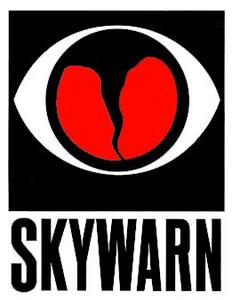 Wind gusts well into the hurricane range were recorded on Cape Cod, along with significant damage from the wet snow, and seven Cape Cod ARES volunteers provided communication at shelters, as cell phone service was disrupted during the blizzard. Cape Cod ARES District Emergency Coordinator Frank O'Laughlin, WQ1O, said the volunteers "seamlessly" transitioned from providing situational awareness to addressing communication failures. He said six ham volunteers supported the regional shelter operation, and two of them put in more than 50 straight hours.
Wind gusts well into the hurricane range were recorded on Cape Cod, along with significant damage from the wet snow, and seven Cape Cod ARES volunteers provided communication at shelters, as cell phone service was disrupted during the blizzard. Cape Cod ARES District Emergency Coordinator Frank O'Laughlin, WQ1O, said the volunteers "seamlessly" transitioned from providing situational awareness to addressing communication failures. He said six ham volunteers supported the regional shelter operation, and two of them put in more than 50 straight hours.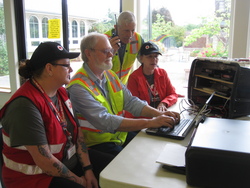 ARRL Emergency Communications training courses cover a wide range of material on the use of radio communications technologies, communications techniques, and emergency management skills necessary when helping served agencies deal with and overcome disasters.
ARRL Emergency Communications training courses cover a wide range of material on the use of radio communications technologies, communications techniques, and emergency management skills necessary when helping served agencies deal with and overcome disasters.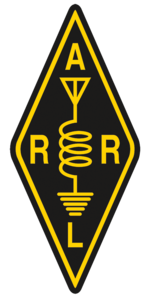 The ARRL Microwave Development Award pays tribute to a radio amateur or group of radio amateurs who contribute to the development of the Amateur Radio microwave bands. The nomination deadline is March 31, 2018.
The ARRL Microwave Development Award pays tribute to a radio amateur or group of radio amateurs who contribute to the development of the Amateur Radio microwave bands. The nomination deadline is March 31, 2018.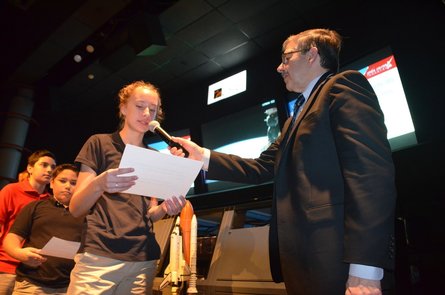 Each year, ARISS provides tens of thousands of students with opportunities to learn about space technologies and communications through Amateur Radio. The program provides learning opportunities by connecting students to astronauts aboard the ISS through a partnership between ARRL, AMSAT, and NASA, as well as other Amateur Radio organizations and worldwide space agencies. The program's goal is to inspire students to pursue interests and careers in science, technology, engineering, and mathematics (STEM) and Amateur Radio.
Each year, ARISS provides tens of thousands of students with opportunities to learn about space technologies and communications through Amateur Radio. The program provides learning opportunities by connecting students to astronauts aboard the ISS through a partnership between ARRL, AMSAT, and NASA, as well as other Amateur Radio organizations and worldwide space agencies. The program's goal is to inspire students to pursue interests and careers in science, technology, engineering, and mathematics (STEM) and Amateur Radio.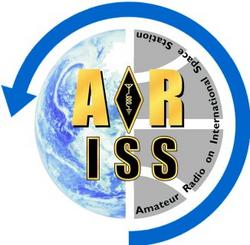 More than 90% of educators who have participated in the program have indicated that ARISS provided ideas for encouraging student exploration and participation. Some teachers and students have become radio amateurs after experiencing a contact with an ISS crew member.
More than 90% of educators who have participated in the program have indicated that ARISS provided ideas for encouraging student exploration and participation. Some teachers and students have become radio amateurs after experiencing a contact with an ISS crew member. Sponsored by
Sponsored by 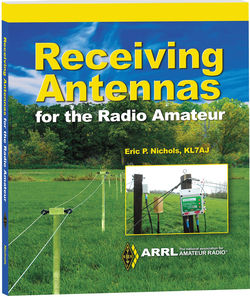 Although the fundamental characteristics of antennas apply to both transmitting and receiving, the requirements and priorities of receiving antennas can be vastly different from those of transmitting antennas. Receiving Antennas for the Radio Amateur focuses entirely on active and passive receiving antennas and associated circuits. Relatively few cases exist where a radio amateur cannot benefit from a separate, well-designed receiving antenna, especially on 160 and 80 meters, and, of course, on our new allocations at 630 and 2200 meters.
Although the fundamental characteristics of antennas apply to both transmitting and receiving, the requirements and priorities of receiving antennas can be vastly different from those of transmitting antennas. Receiving Antennas for the Radio Amateur focuses entirely on active and passive receiving antennas and associated circuits. Relatively few cases exist where a radio amateur cannot benefit from a separate, well-designed receiving antenna, especially on 160 and 80 meters, and, of course, on our new allocations at 630 and 2200 meters..JPG)
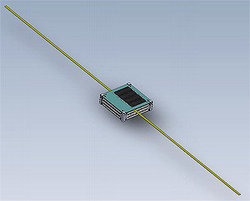 Last December, in a letter to their developer,
Last December, in a letter to their developer, .jpg) "In past years, we have presented exhibits that have shown all of the different settings where radio is used," said the Deutscher Amateur Radio Club's (
"In past years, we have presented exhibits that have shown all of the different settings where radio is used," said the Deutscher Amateur Radio Club's (.JPG) In 2017, when the events were held in mid-July, the attendance for both events was more than 17,100. This year's event will feature some 180 exhibitors from 30 countries.
In 2017, when the events were held in mid-July, the attendance for both events was more than 17,100. This year's event will feature some 180 exhibitors from 30 countries.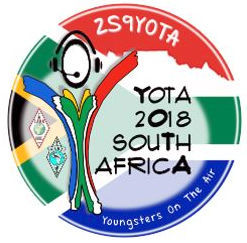 The annual event brings together young people from International Amateur Radio Union Region 1 (
The annual event brings together young people from International Amateur Radio Union Region 1 (.jpg)
.jpg)
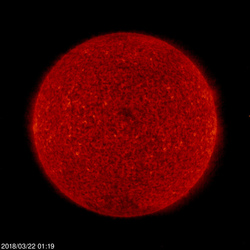 Average daily solar flux over the same 2-week periods increased from 67.7 to 69.3. Geomagnetic indices about doubled, with average planetary A index bumping up from 7.1 to 14.4, and the mid-latitude A index rose from 5.7 to 11.3.
Average daily solar flux over the same 2-week periods increased from 67.7 to 69.3. Geomagnetic indices about doubled, with average planetary A index bumping up from 7.1 to 14.4, and the mid-latitude A index rose from 5.7 to 11.3.







